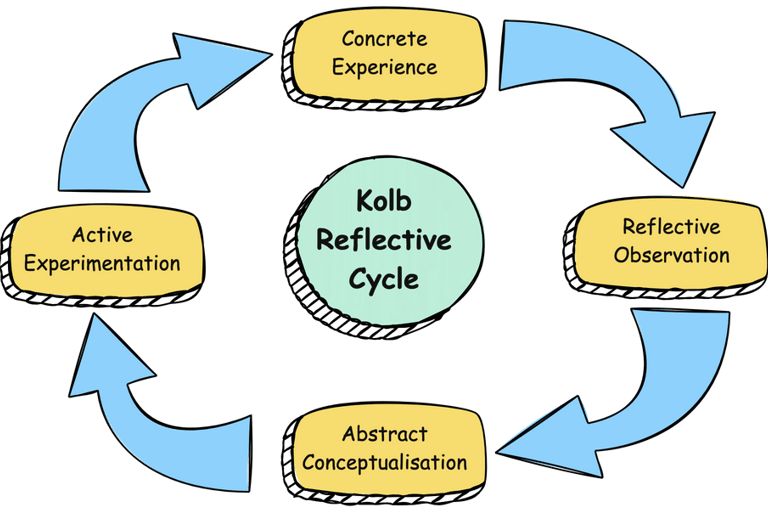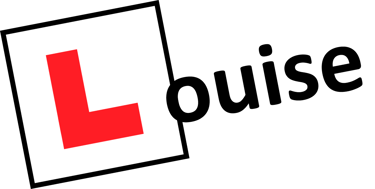Reflective Logs
What is a reflective log? Why should we write reflective logs? How do they help? How do you write one?
Louise
7/22/202410 min read


What is a Reflective Log?
Photo by José M. Reyes on Unsplash
Put simply, a reflective log is a written record of your reflection on an event. This could be a training session, an action you took, a decision you made, or something which happened. Reflecting on your own actions and behaviours can help you to view a situation objectively, with a view to future improvement and development.
In the context of driver and instructor training, a reflective log records:
The goals for the training session
What went well during the training session (achievements)
Areas for development identified during the training session (learning needs)
Questions or issues which arose from the training session or private practice
An action plan to address the identified areas for development
Why Should We Use Reflective Logs?
Goal
Without a clear goal in mind, it can be difficult to assess whether any progress is being made, and it is almost impossible to formulate any kind of action plan: this is where the majority of people struggle in the ADI Part 3 test. When the PDI is unable to agree a specific goal with the pupil, they cannot design effective training exercises for the pupil, and progress cannot be measured. Learning to set clear, specific, measurable goals now will help you to be successful at Part 3, and will also help you to deliver more effective driving lessons for your pupil.
The goal for your first Part 2 training session is to identify the most immediate training needs. From this point, you can set yourself goals based on the identified areas for development. Your goals need to be Specific, Measurable, Achievable, Relevant and Time-bound (SMART). Setting SMART goals takes practice! In particular, it can be difficult, at first, to set goals which are measurable. You could think about what you will see, hear and feel when you have achieved your goal: this will help you to figure out what went well and where the goal hasn't yet been met, and this will help you to develop an action plan.
What Went Well
Often, we focus only on the negatives of a situation and forget about the positives: this is simply human nature! In the context of driver and instructor training, this can lead to feelings of deflation and lack of motivation - it can feel as though everything is going wrong and nothing is going right: "I can't drive!" Recording what went well can improve motivation by offering a more objective view of the training session, especially if there is a focus on the evidence or measurable results.
Areas for Development
Identifying areas for development is the first step in writing an action plan: how can you improve your skills if you don't first understand your training needs? In the context of driver and instructor training, an area for development is any aspect of driving which does not meet the DVSA standard for driving as laid out in the National Standard for driving cars and light vans.
Questions or Issues
Sometimes, questions or issues arise during a training session (or during private practice) and they are either forgotten or there is no time to address them during the session. It can be helpful to make a note of these questions so that they can be addressed by the trainer during the next training session - a reflective log provides a place to record questions and issues.
Action Plan
The most important part of a reflective log is the action plan - there's no point in identifying areas for development if you do nothing about it! The action plan is where you list out the specific steps you will take to improve your skills. If this is done well (and the action plan is actually put into action!) then your trainer should be able to observe a noticeable difference in your ability at the next training session.
In summary, reflection is where true learning happens, and a reflective log provides the structure for this reflection. If used well, the reflective log is a powerful tool which will lead to deeper understanding, more effective learning and reduced need for in-person training (which will also save you money!).
How Do I Write a Reflective Log?
First of all, write down any positives you can remember from the event or training session. This will help you to frame things positively and will give you and idea of how to proceed in future. For example, if you were happy with your clutch control, you can be proud of your achievements and can use your clutch control skills for different skills and apply it in different situations. To help to write down the positives, you could ask yourself questions such as:
Which parts of my performance today am I most proud of?
Which bits of the training session did I enjoy the most?
At which points did I feel the most calm and in control?
Which aspects of my performance was my trainer most pleased with or impressed by?
At first, it can be difficult to think of any positives, and sometimes it can be hard to remember that anything went well at all. It's important to find the positives, no matter how small they might feel. Remember to weigh up your performance against objective evidence. Here are some examples:
Was the car between the white lines by the end of your parking manoeuvre?
Was the car an acceptable distance from the kerb when pulled up?
Did the car roll back during clutch control at an uphill junction?
Were other road users confused by your signal at a roundabout?
Did you move off smoothly downhill by selecting the correct gear?
Start with the Positives
Write Down Your Areas for Development
Next, write down anything about your performance which you were less happy with during the event or training session. This will help you to write an action plan, which is the final part of the reflective log. Remember that mistakes are a normal part of learning. You are writing down your areas for development so that you can... well... develop them! This is not an exercise in beating yourself up or describing yourself as a failure. Rather than writing down what went wrong, it can be helpful to frame this as goals for the future. For example, rather than writing, "My clutch control was terrible!" consider, "I need to be able to use clutch control without stalling at junctions." To help to write down your areas for development, you could ask yourself questions such as:
Which parts of my performance today need improvement?
Which bits of the training session did I enjoy the least? Why was this?
At which points did I feel the most anxious / least in control?
In which aspects of my driving did my trainer have to help me most?
The negatives may come flooding into your mind. Try to focus on the most important ones, or the issues which happened most frequently, rather than writing down every single negative thing which happened (or didn't happen when it should have done). Remember to weigh up your performance against objective evidence. Here are some examples:
How many attempts did it take to get the car between the white lines during your parking manoeuvre?
Was the car too far away from or too close to the kerb when pulled up? By how much?
Did the car roll back during clutch control at an uphill junction? How many times? How far?
Were you driving within the speed limit at all times during the session?
Did you need to be prompted for mirror checks when passing obstacles such as parked cars?
Create Your Action Plan
Having identified your strengths and areas for development, it is now time to use these to create an action plan. If there was very little that went wrong, you could use your action plan to consider how you will build on your successes. For example, if you were able to park within the bay lines with only one corrective shunt, could you set yourself a goal of parking between the lines without the need for a corrective shunt?
How to write an action plan:
Look at your list of areas for development and select 3 you'd like to work on. This could be because they are easily fixed (a "quick win"), because they were the greatest need (e.g. the most likely mistakes to cause an accident) or because they were consistent habits.
Write a Specific, Measurable, Achievable, Relevant, Time-bound (SMART) goal in relation to the first of your chosen areas for development. For example, rather than writing, "Check my mirrors more," you could write: "By next training session, ensure that I am checking the correct mirrors when moving around parked cars, every time."
Think about how you could achieve this goal. What steps are needed to reach success? It's not usually as simple as just writing down the intention to do something, and usually more steps are needed. In the example case of mirrors, these actions could be to practise explaining the mirror checks to a learner driver, including why they are necessary, as well as actions such as sticking post-it notes in the car or speaking out loud when driving yourself.
Write down the set of specific actions you will take to achieve your goal.
Repeat steps 2 - 4 for the other two areas for development.
Put the plan into action and achieve your goals!
Example Action Plan
For example, if the learning need was identified as e.g. "Practise checking blind spots" what detail can you add to turn this into an action plan? First we need to turn this into a SMART goal e.g. "By next training session, I will check the relevant blind spots every time before moving off." Then, we can consider how we can achieve this goal. This exercise will be especially useful for ADI Part 3, when you are helping learners to develop their skills - you need to be able to break goals down into actionable steps. Here are some examples for actions and activities which can build skills and understanding relating to checking blind spots.
Read about blind spots (e.g. The DVSA Guide to Driving - The Essential Skills)
Watch YouTube videos about blind spots and how important it is to check them
Use cones or another person to figure out exactly where the blind spots are for my car
Identify examples of things which I wouldn't have seen if I hadn't checked my blind spots (e.g. pedestrians, cyclists, cars on driveways on either side, cars or other vehicles in car parks, parked vehicles which may move off, lorries or other vehicles when joining motorways or dual carriageways from slip roads etc)
Discuss blind spots with another driver or somebody who is learning to drive, to gain their understanding of a blind spot and how to carry out a blind spot check
Practise explaining blind spot checks to somebody else as though teaching them to move off safely
Ask somebody to watch me move off and stop and to prompt me if I don't check my blind spots
Each time I move off, think "Blind spots!" - maybe put a post-it note on the dashboard to remind me
On a long, relatively straight, section of road, practise moving off and stopping, remembering to check all 6 points, including blind spots each time (possibly with a commentary, as though explaining this to a learner e.g. "Left blind spot, left mirror, ahead, interior mirror, right mirror, right blind spot. All safe.")
Practise moving off and stopping repeatedly, but this time saying what can be seen (or not seen) at each point e.g. "There's a red car on the driveway but nobody is in it; there are no pedestrians or cyclists on the left pavement; there is a parked car ahead but there is nobody in it; there is a bus approaching from behind but it is a long way away and it pulling up at a bus stop; there are no vehicles overtaking; there is a postman in the driveway over my right shoulder but they are walking away from the road. It is safe to move off, but I will apply a signal for the bus driver and the postman.
If we look at the marking sheet for the ADI Part 3 test or the Standards Check, we can see that the Teaching and Learning Strategies section has the following competency:
At the end of the session - was the pupil encouraged to reflect on their own performance?
If we are going to help our pupils to reflect on their own performance, we first need to develop this skill for ourselves, much as we need to learn to drive competently before we can teach others to drive.
However, the "reflection" part of the lesson is not something which is done only at the end: this should be constant throughout the lesson, and particularly after an event with potentially risky consequences. This is reflected in the marking sheet as:
Was sufficient feedback given to help the pupil understand any potential safety critical incidents?
Was the pupil encouraged to analyse problems and take responsibility for their learning?
Was the pupil given appropriate and timely feedback during the session?
Although the wording is "feedback", this is most effective when done in a coaching style i.e. by asking questions to help the pupil to reflect for themselves. Learner drivers can take responsibility for their learning by formulating action plans, with the help of the instructor. This is all about how the learning needs can be met.
By helping a learner driver to evaluate their performance, the learning goals and needs become clear, and this helps with lesson planning and feeds into the Lesson Planning competencies:
Did the trainer identify the pupil’s learning goals and needs?
Was the lesson plan adapted, when appropriate, to help the pupil work towards their learning goals?
Essentially, teaching people to drive is a continuous cycle of reflection and action planning. If you can hone your own reflective skills and action plans during your Part 2 and Part 3 training, then you will be a more effective driving instructor and will be better-placed to pass your ADI Part 3 test. You can continue to develop your skills by reflecting on your own performance after each lesson you deliver, as well as helping your pupils to reflect during lessons.
Structure of a Reflective Log
Conclusion
Although it takes practice and can feel awkward at first, writing reflective logs can be an incredibly powerful tool for your development. Learning to reflect in detail on your own performance will help you to teach your learners to reflect on their performance. This will not only increase your chances of success at ADI Part 3, but will improve the quality and effectiveness of your driving lessons. Further, developing reflective skills in your pupils will ultimately produce safer, thinking drivers who are keen to develop their skills, and this will lead to safer roads.


OUR LOCATION
Redruth, Cornwall
CONTACT US
info@louisedrivertuition.co.uk
07952 982 993
AREAS COVERED
Redruth, Pool, Camborne, Illogan, Portreath, Lanner, Ponsanooth, Penryn, Falmouth, Carnon Downs, Threemilestone, Chacewater, Blackwater, Truro College, Stithians, Four Lanes, St Day, Mount Hawke
Louise Driver Tuition is a Trading Name of DriverHead Ltd. Registered in England and Wales (16060569)
Web Design by Aswonvos
Copyright © Louise Driver Tuition 2025
Registered Address: 7 Albany Road, Redruth TR15 2HU
